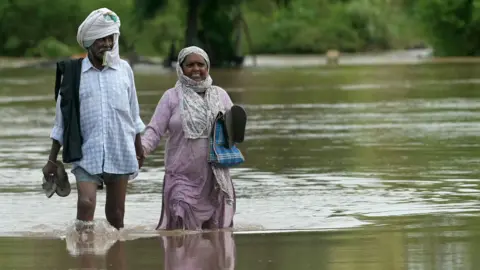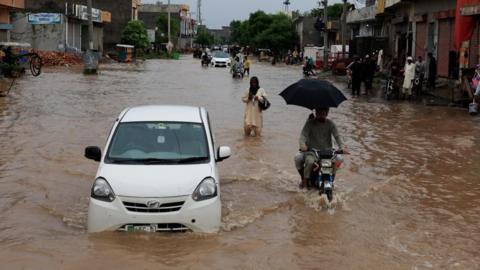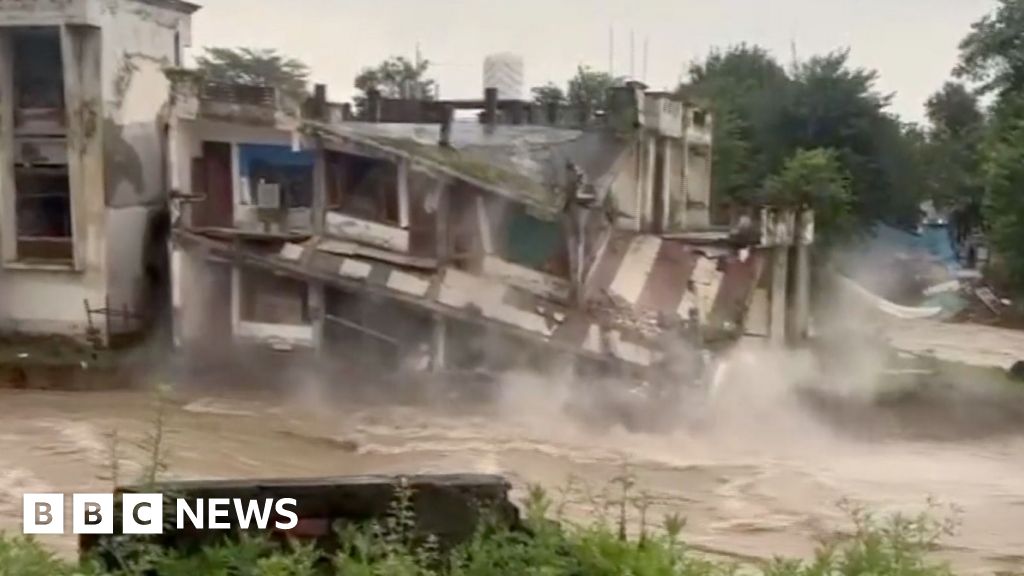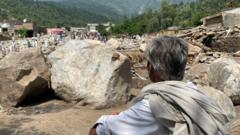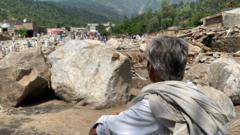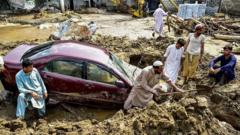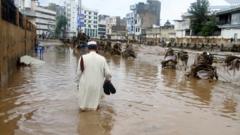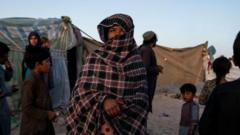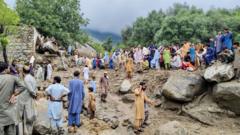Heavy monsoon rains in Pakistan have led to a tragic death toll of at least 57 people within just two days, with officials reporting that many of the deceased are children. The relentless downpours commenced on Wednesday, primarily impacting Punjab, the country’s most populous province. Many lives were lost due to collapsing buildings, as detailed by the National Disaster Management Authority (NDMA). Among the victims, 24 were reported to be children.
This escalation in extreme weather events is not new for Pakistan, which has endured severe heatwaves and flooding in recent years, with climate change being linked to these phenomena. Since the onset of the monsoon season in late June, 180 lives have been claimed, and countless others have sustained injuries, alongside the devastation to infrastructure and agriculture.
Chakwal, approximately 60 miles from Islamabad, has been particularly hard-hit. Local farmer Malak Jamil shared his heart-wrenching experience of watching floodwaters ravage his home and livelihood, estimating losses exceeding $6,000. "I have no idea how I will recover from this," he expressed in an interview. The flooding has also impeded road access in many regions, prompting the Pakistani military to deploy helicopters for the rescue of over a hundred stranded individuals.
As monsoon rains continue, the Pakistani government has urged citizens in vulnerable low-lying areas to prioritize their safety, heeding evacuation orders and seeking higher ground. Encouragingly, the Pakistan Meteorological Department has predicted a brief respite from heavy rainfall on Friday.
Among the alarming causes of fatalities, some deaths have been associated with electrocution as floodwaters compromised power lines. The United Nations Children’s Fund highlighted the grave risks faced by children during these times, from drowning to the spread of waterborne diseases exacerbated by the floods.
The recent increase in flooding severity has been attributed to climate change, with models indicating that human activity has intensified rainfall patterns, particularly during monsoon seasons, which run from July to September. The catastrophic flooding of 2022 remains fresh in memory, where over 1,700 people perished, and millions were displaced as a result.
Moreover, intensified heatwaves linked to climate change have continued to threaten Pakistan, while accelerated glacier melting in northern regions has further compounded the risk of flooding, as reported by disaster management officials.
With these recent events, the urgent need for comprehensive climate adaptation strategies has become increasingly evident as Pakistan grapples with the catastrophic effects of climate change on its population and infrastructure.




